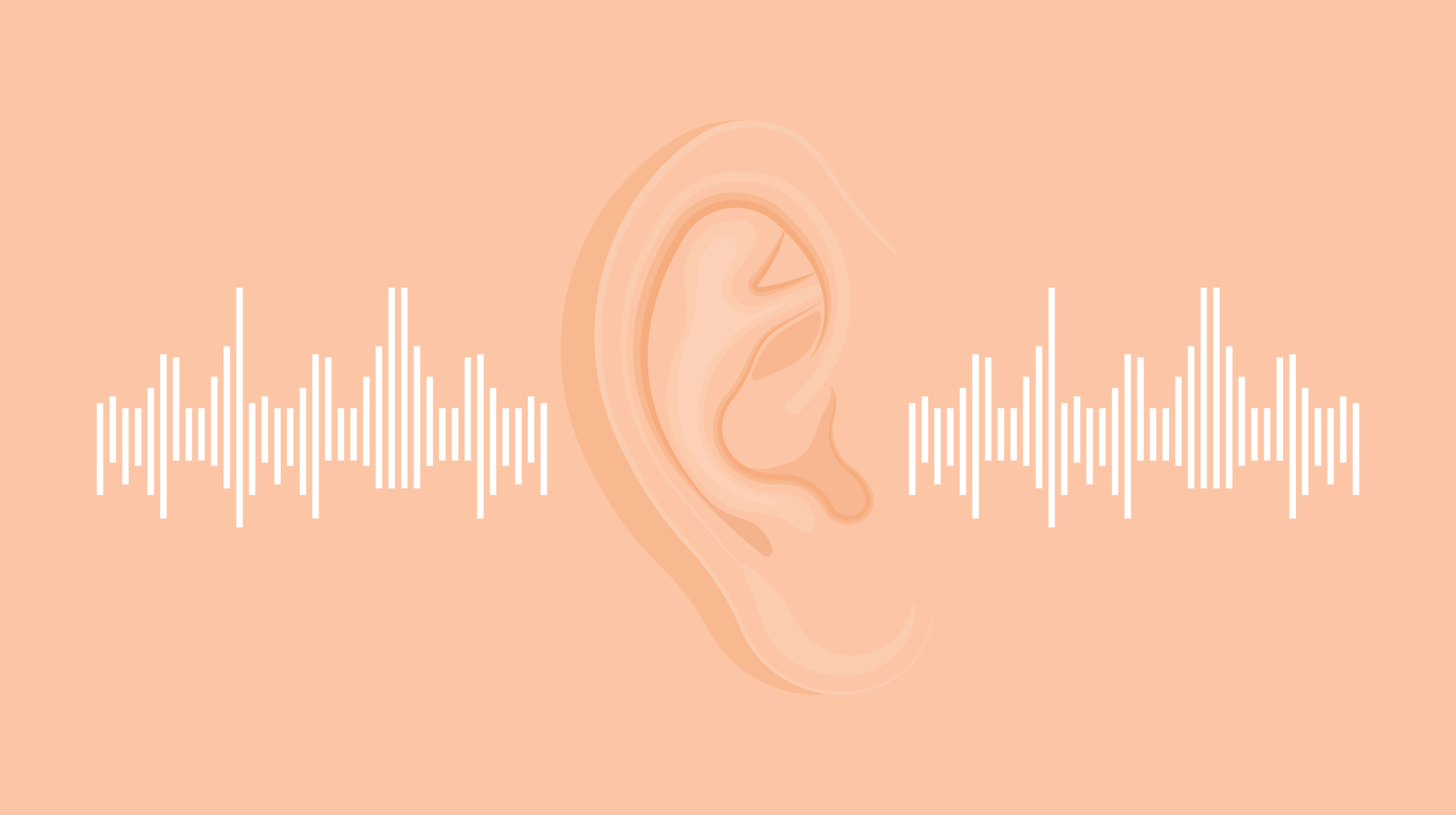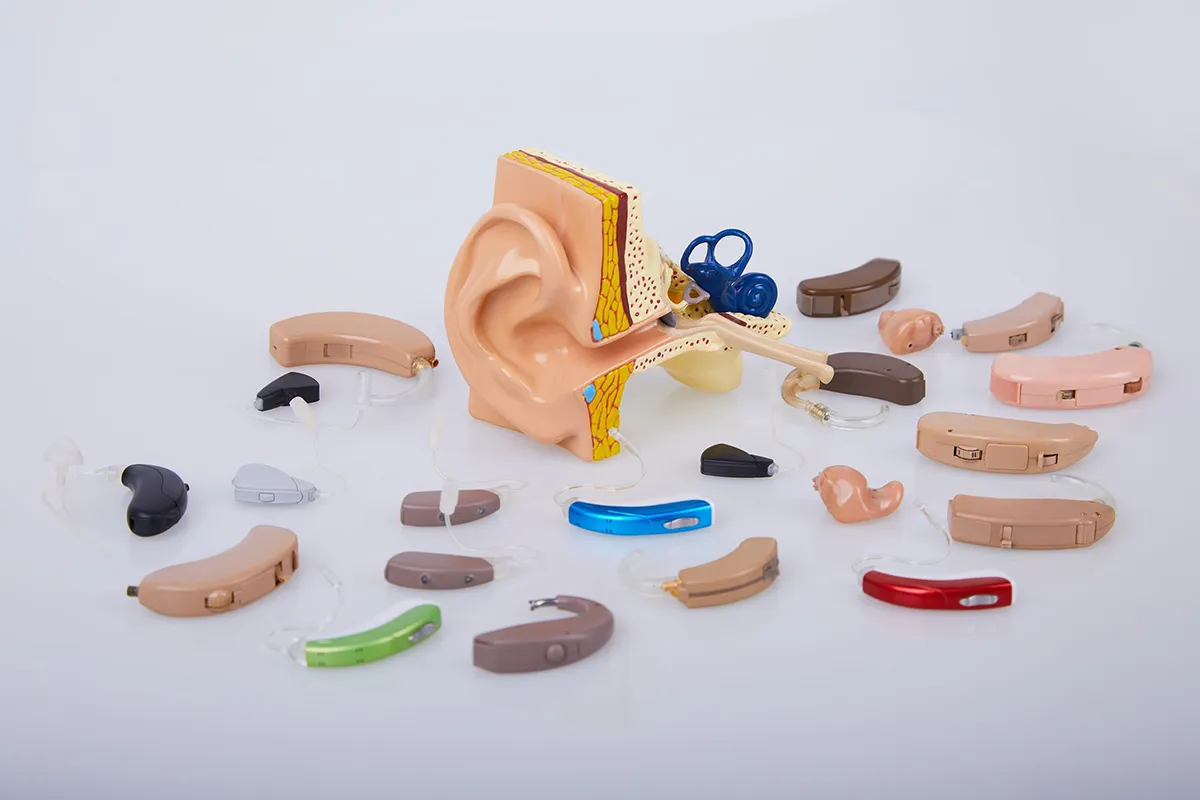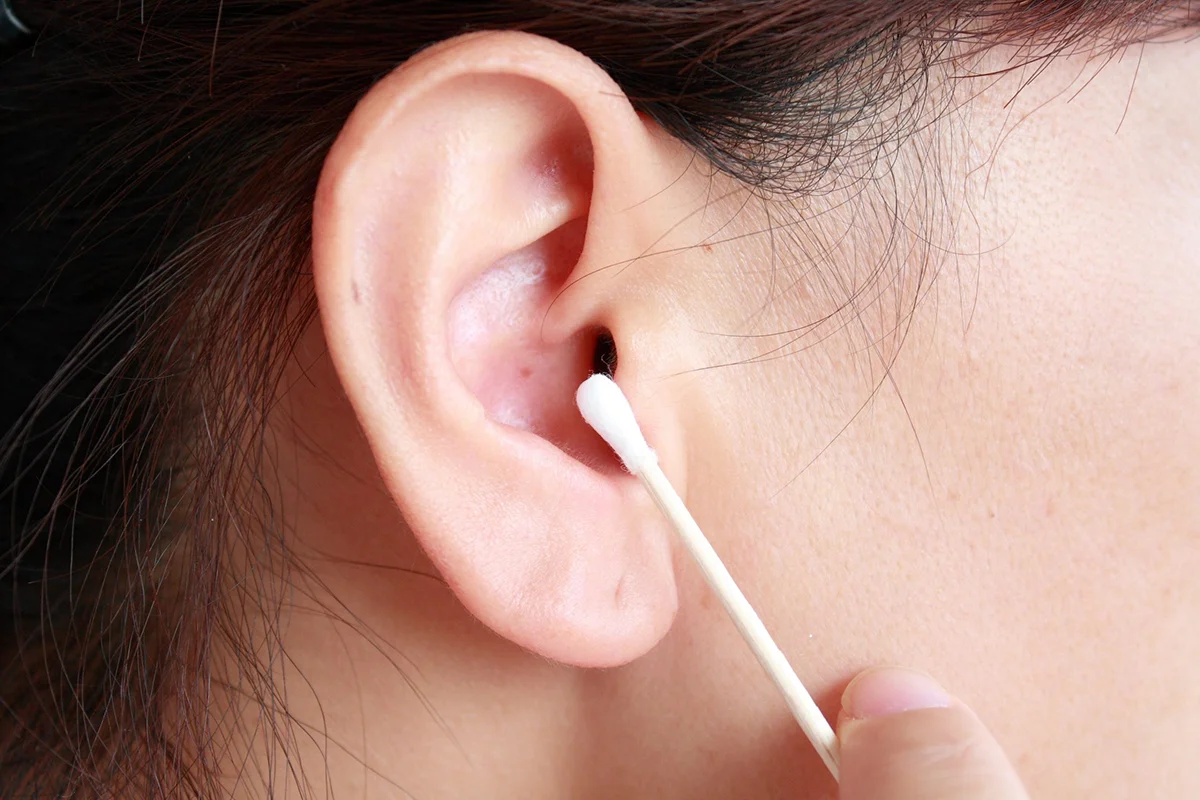Eight months have now passed since the Food & Drug Administration (FDA), at the direction of Congress, implemented a rule allowing for the sale of over-the-counter (OTC) hearing aids to improve access to safe, effective and affordable options for the millions of American adults with self-perceived mild-to-moderate hearing loss1. Innovation breeds creativity, and the consumer landscape for hearing health is now transformed and constantly evolving.
Here at Eargo, we welcome the FDA’s OTC Hearing Aid rule wholeheartedly because our mission has always been to help as many folks as possible on their unique hearing health journeys. The purpose of the OTC rule is to provide more options and empower Americans suffering with mild to moderate hearing loss to make the most appropriate and best-informed choice to address their hearing loss and communication needs. As a result, as more hearing aid options in the market make Americans’ hearing aid choice more complex, Eargo welcomes the opportunity to help navigate this vast landscape and demonstrate why Eargo hearing aids may be a good option for you.
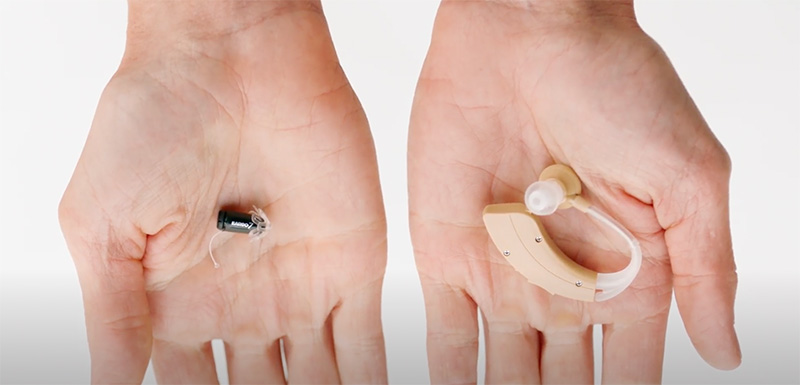
Does all the variety seem overwhelming? It sure can be! A recent article by Manchaiah and colleagues2 did a terrific job in sorting the hearing devices into two broad categories: (1) unregulated devices and (2) devices regulated by the FDA.
Unregulated product offerings include consumer audio devices, such as headphones and earphones for listening to music, audiobooks, on whatever sound source you’d like to connect with. “Hearables”, which are hybrids between wearable and audio technology, are in this category too, and offer functionality beyond audio streaming, such as heart rate monitoring and GPS tracking for your workout. The third device type in the unregulated category is “PSAPs” - Personal Sound Amplification Products that process and enhance the sound signal for individuals with normal hearing but are not designed to assist with hearing loss.
Some of the cool and helpful technology that are included in these unregulated products can also be included inside hearing aids, as extra features.
FDA-regulated hearing technologies are considered medical devices. They are carefully designed for people with hearing loss and must meet stringent FDA standards. The three categories of product in this category are all hearing aids that have been rigorously tested for safety, quality, and efficacy using evidence-based clinical methods.
The three FDA-regulated categories are pre-set OTC, self-fitting OTC, and by prescription only. Eargo 7, 6, and 5 are all FDA-regulated OTC hearing aids and are also FDA-cleared as self-fitting (discussed below).
What is the difference between hearing aids that are available by prescription only, versus over-the-counter? The simple answers are:
age of the user
type and severity of their hearing loss
personal choice
Prescription-only hearing aids (Prescription HAs) are available from birth onwards. Prescription HAs are fitted by a licensed healthcare provider (HCP), such as an audiologist, hearing instrument specialist, or ENT. The HCP first performs a hearing test and then programs the hearing aid using a clinic-based fitting software. Prescription HAs can be fit to any degree of hearing loss, from mild right up to profound. Prescriptions HAs can also be fit to individuals with more complex hearing and communication disorders that require consistent monitoring by the HCP. Even if you are a candidate for an OTC hearing aid, you may obtain one by prescription should you so desire.
OTC hearing aids are intended for use only by adults age 18 or over who self-identify symptoms of mild to moderate hearing loss3, without any medical complications that require a doctor4. You can purchase OTC hearing aids without a hearing test or consulting a HCP. Within the OTC category, you can opt for pre-set OTC hearing aids that arrive already configured to compensate for this type of loss, or you can choose a self-fitting hearing aid like Eargo which will allow you to self-adjust the hearing aids to your unique hearing needs without a visit to a HCP.
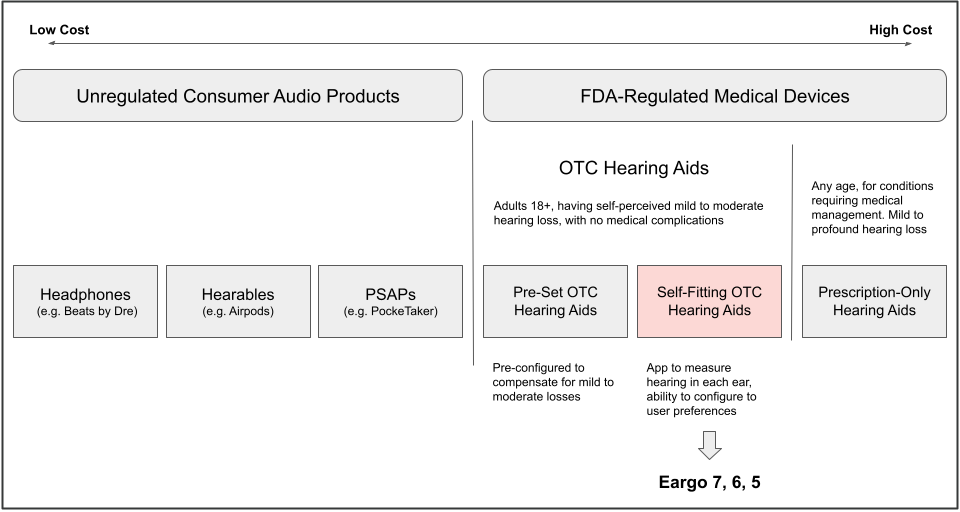 You can use E7/6/5 as “pre-set” hearing aids if you don’t customize them using Sound Match - they come out of the box with 4 pre-set programs to try, all of which cover mild to moderate hearing loss.
You can use E7/6/5 as “pre-set” hearing aids if you don’t customize them using Sound Match - they come out of the box with 4 pre-set programs to try, all of which cover mild to moderate hearing loss.
Self-fitting OTC hearing aids, including Eargo 7, 6, and 5, allow you to use a mobile app to measure your hearing thresholds in each ear, which then configures the hearing aid settings. Self-fitting products usually allow you to make further adjustments to sound quality, for example volume, listening environment, and other preferences.
There are pros and cons to consider for any choice you make. Some key distinctions to consider when choosing between Prescription HAs and OTC hearing aids are cost, convenience, degree of hearing loss, comfort with using technology and mobile phones, and personal preference. Many people who are candidates for OTC hearing aids are attracted by the lower costs and the ability to make changes from a mobile app without the need to schedule an appointment. Eargo OTC hearing aids also offer the convenience of self-fitting the devices at home.
If you’ve read this far, perhaps you or someone you love could benefit from OTC hearing aids. As such, in their article, Manchiah and colleagues compiled a list of common, important considerations you should always ask while choosing an OTC hearing aid. We have summarized their checklist below along with a description of how Eargo products addresses every single item in this important checklist:
Is it good quality?
Eargo 7, 6, and 5 are FDA-regulated self-fitting OTC hearing aids. These products meet stringent clinical and regulatory criteria. Eargo 7 & 6 are water-resistant to the IPX7 rating, and Eargo 7 hearing aids are sweat-resistant.
Is it affordable?
Eargo’s self-fitting hearing aids range in price from $1,950 to $2,950. There are a range of monthly financing options available through our partners, including as low as 0% APR financing over 24 months as well as 36-month financing on our latest product, Eargo 7. Many health insurance companies also provide benefits toward the purchase of Eargo hearing aids when eligible under the plans’ policies5, and Eargo can help determine coverage and submit claims on your behalf.
Is it appropriate for my needs?
We consider you to be the expert on your hearing needs. All Eargo products are rechargeable, virtually invisible, and come with lifetime support from our hearing professionals. You can speak with one of our representatives to explore whether Eargo hearing aids may be suitable for you. We also offer free hearing screenings online or in Victra-Verizon stores nationwide.
What features are available?
Eargo 7, 6, and 5 all come standard with our unique form factor which is designed to be virtually invisible when worn, as well as comfortable and crisp sounding through our ‘open fit’ design. Eargos are also rechargeable and come with a portable charging case. Eargo 7 includes our latest enhancements in signal processing including SoundAdjust+. Learn more about how they differ here.
How are Eargos fit?
Eargo 7, 6, and 5 are self-fitting when paired with our in-app Sound Match feature. If self-fitting is not part of your plans, they come ready to use with 4 pre-set listening programs inside. Our friendly Eargo hearing professionals can assist you with any self-fitting questions or concerns.
Can I access support?
Yes. We encourage our customers to participate in our orientation call with your personal hearing professional soon after purchase to ensure they are getting the most out of their Eargos. Our customers also have lifetime access to friendly support from our dedicated customer care team. You can rely on Eargo support.
What is the warranty?
At the time of writing, Eargo 7 has a 2-year limited warranty and Eargo 6 and 5 have a 1-year limited warranty. Check out our warranty terms and conditions at eargo.com/warranty.
Is there a return policy?
Yes. If you are not satisfied with your Eargo hearing aids you have the option of returning the device within 45 days after delivery.
If it doesn’t work for me, what is my next step?
We will issue your full refund. We suggest you consult a healthcare professional to determine next steps regarding your hearing health.
1 Goman, A.M. and Lin, F.R. (2016) Prevalence of Hearing Loss by Severity in the United States. American Journal of Public Health, 42, 1820-1822.
https://doi.org/10.2105/AJPH.2016.303299
2 Manchaiah, Vinaya AuD, PhD, MBA; Portnuff, Cory AuD, PhD; Sharma, Anu PhD; Swanepoel, De Wet PhD. Over-The-Counter Hearing Aids: What Do Consumers Need To Know?. The Hearing Journal 76(02):p 22,23,24, February 2023.
3 OTC self-fitting hearing aids might be right for you if you’re experiencing any of the following:
- You have trouble hearing speech in noisy places
- You find it hard to follow speech in groups
- You have trouble hearing on the phone
- Listening makes you tired
- Needing to turn up the volume on the TV or radio, and other people complain it’s too loud
4 The FDA does recommend a hearing aid exam with a licensed healthcare provider (preferably an ENT), however, if you have any of the following symptoms:
- Injury to or deformity of the ear
- Fluid, pus, or blood coming from one or both ears
- Sudden or fluctuating hearing loss
- Better hearing in one ear than the other
- Ringing or buzzing in one or both ears
- Constant pain in one or both ears
- Vertigo or dizziness
- A full or plugged feeling in the ear
5 Insurance plans may require a hearing test by a licensed HCP as a condition of coverage.
